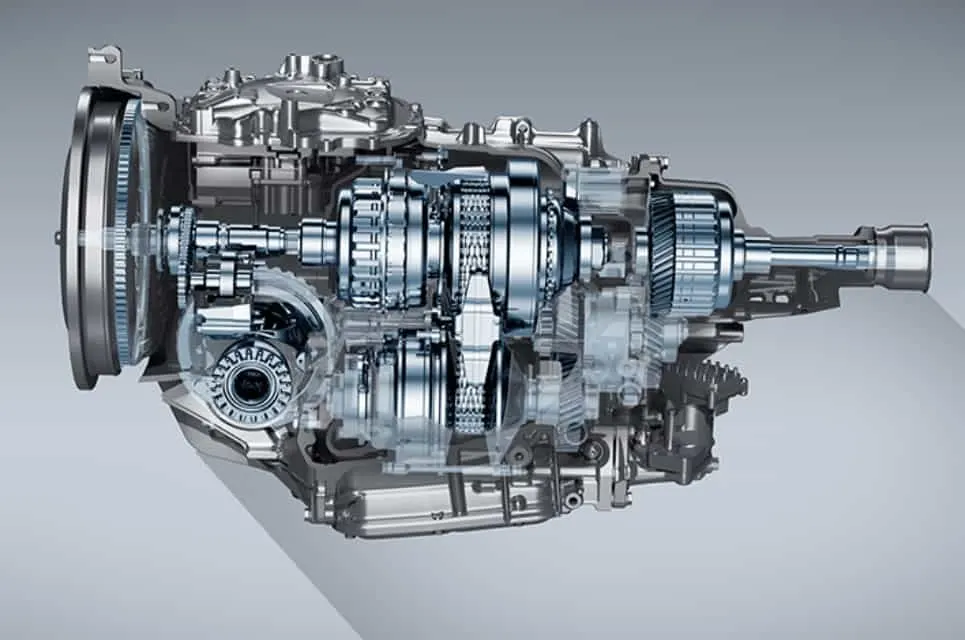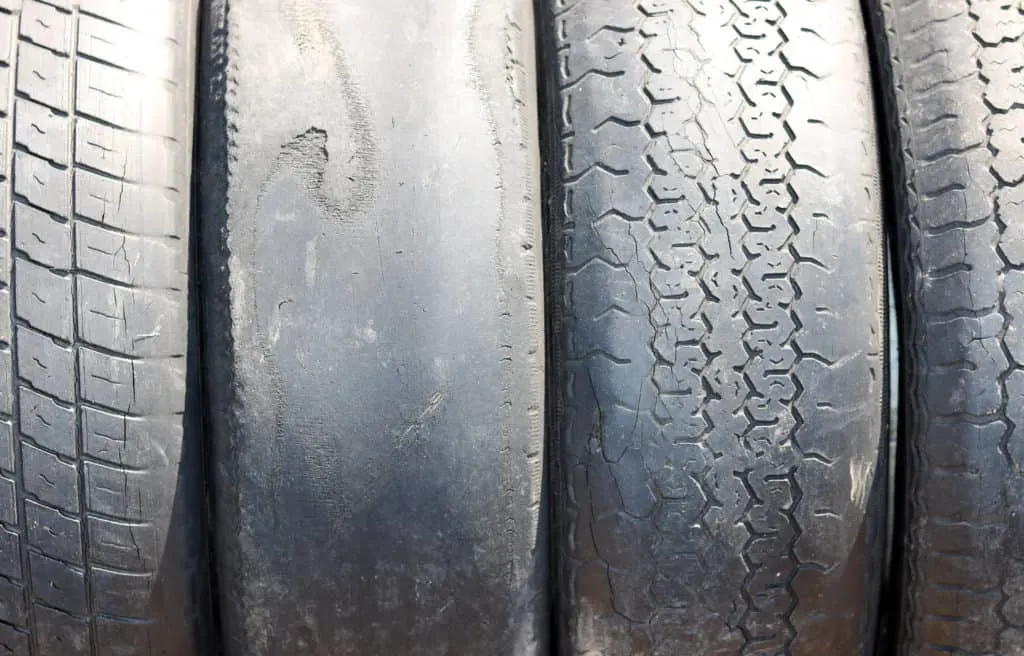Off-road tires are designed for use on unpaved surfaces, such as gravel roads and trails. They have thicker sidewalls and a more aggressive tread pattern than standard tires, allowing them to grip the surface better and provide better traction. As a result, they tend to wear more quickly than regular tires. Do off-road tires wear faster?
Generally, off-road tires tend to wear faster than regular tires due to their thicker sidewalls and more aggressive tread pattern. However, there are few factors that can affect how quickly they wear.
Do Off-Road Tires Wear Faster?
The type of surface you drive on can make a big difference. Off-road tires perform best on gravel roads and trails, where they can grip the surface and provide traction. On paved roads, they can cause the vehicle to hydroplane and lose traction. As a result, they may wear more quickly on paved roads than regular tires.
The weight of the vehicle can also make a difference. Heavier vehicles put more stress on the tires, which can cause them to wear more quickly.
Driving habits can also affect tire wear. The tires will wear more quickly if you drive aggressively or corner too sharply.
Reasons for Off-Road Tires to Wear Faster:
Let me highlight the major reasons that cause the off-road tires to wear faster:
- The thicker sidewalls are good for trails and rough surfaces but bad on roads with less traction.
- The aggressive tread helps gain traction but wears down quickly on the pavement.
- Higher weight on the vehicle equals more wear over time.
- Poor driving habits will accelerate tire deterioration.
So if you’re frequently hitting the trails and off-roading, then the off-road tires will suit you well. But if your lifestyle includes a lot of highway driving as well, it might be more practical to stick with the all-season or regular tires.
How Long Do Off-Road Tires Last?
There is no definitive answer to this question as everyone’s driving habits and lifestyles vary. However, on average off-road tires will last anywhere about 40,000 miles before needing to be replaced. Again, this number will depend on how you drive and the condition of the roads you’re travelling on.
If you’re looking for a more precise estimate, it’s best to consult with your local tire dealer. They will be able to inspect your vehicle and tires and give you a more accurate estimate of how long your off-road tires will last.
How Can You Extend the Life of Your Off-Road Tires??
In order to extend the life of your off-road tires, there are a few things you can do:
- Avoid driving on paved roads whenever possible.
- If you must drive on paved roads, reduce your speed and take it easy.
- Avoid aggressive driving and sharp cornering.
- Make sure your vehicle’s weight is evenly distributed.
- Regularly inspect your tires for damage and replace them when necessary.
Following these tips will help you get the most out of your off-road tires and minimize wear and tear.
How Do You Know When It’s Time to Replace Your Off-Road Tires?
Again, there is no definitive answer to this question. However, there are a few signs that indicate it might be time to replace your off-road tires:
- The tread is visibly worn down.
- The tires are losing traction on paved roads.
- You’re experiencing excessive wear and tear on the tires.
- You’re experiencing a rough ride
- You’re experiencing high vibrations
- Shallow Tread
- Uneven Tread Wear
- Road Hazards (Nails, Curbs Hits, Rocks)
- Damaged Valve Caps
- Damaged areas

How to Measure Wear of Your Off-Road Tires?
There are a few standardized tests that you can perform to measure the wear of the off-road tire:
- Penny Test
- The Quarter Test
- The Indicator Bar
Penny Test:

This is the most basic way to measure the wear of your off-road tires. All you need is a penny and a ruler.
Take the penny and place it into several different areas of the tread with Lincoln’s head upside down and facing you. If you can see the top of Abraham Lincoln’s head, then the tread is too worn (less than 2/32″), and it’s time for a new set of tires.
Quarter Test:

This test is a little more accurate than the penny test, as it measures the tread depth of your tires.
You’ll need a quarter, ruler, and level surface.
Lay the quarter on its edge and insert it into the tire’s tread so that Washington is level with the surface. If the tread touches Washington’s head, you have a worn tire (at least 4/32″)
Indicator Bar:

This test uses a specially designed gauge to measure the tread depth of your off-road tires.
The indicator bar that’s moulded into some off-road tires has a series of notches corresponding to different tread depths.
You can use the gauge to measure the depth of the tread and compare it to the notches to get an accurate reading. When these bars become visibly flush with the adjacent ribs, the tire has less than 2/32″ of tread remaining.
This is the most accurate way to measure the wear of your off-road tires, but it’s also the most expensive.
If you’re experiencing any of the above symptoms, it might be time for a new set of tires. Consult your local tire dealer to get an accurate estimate of how much tread is left on your current tires.
They will also be able to advise you on the best course of action, whether that means replacing your off-road tires with a similar set or switching to a different type of tire altogether.
Tire Tread Depth Chart:
Tire Tread Size (mm) | Expected Condition (Action Required) |
8 | Good |
7 | Good |
6 | Good |
5 | OK |
4 | OK |
3 | Inspect Monthly |
2 | Won't Last Long |
1.66 | Legal Limit |
Types of Off-Road Tire Wear and Solutions:
There are three main types of off-road tire wear:
- Scalloping
- Cupping
- Feathering
Scalloping:
This type of wear is most commonly caused by driving on paved roads. The tires will start to wear down along the edges, creating a series of shallow “scallops” in the tread.
One way to help reduce scalloping is to reduce your speed and take it easy when driving on paved roads. You can also try to distribute the weight of your vehicle evenly.
Cupping:

This type of wear is most commonly caused by driving over rocks, roots, or other obstacles. The tread will start to wear down in the centre of the tire, creating a series of “cups” in the tread.
One way to help reduce cupping is to drive more slowly over obstacles and avoid hard braking. You can also try to avoid driving over the same areas repeatedly.
Feathering:
This type of wear is most commonly caused by driving on soft surfaces, such as sand or mud. The tread will start to wear down along the edges, creating a series of “feathers” in the tread.
One way to help reduce feathering is to drive more slowly on soft surfaces. You can also try to stay in the tracks left by other vehicles.
Bulges, Blisters, Bars, and Cracks:

While not technically a type of wear, bulges, blisters, bars, and cracks can be a sign that your tires are in danger of failing. If you notice any of these abnormalities, stop using the tire immediately and have it inspected by a professional.
Bulgers:
A bulge is a sign of excessive internal pressure in the tire. If you notice a bulge, do not drive on the tire and have the tire inspected by a professional immediately.
Blisters:
A blister is a sign of excessive heat and pressure in the tire. If you notice blisters, do not drive on the tire.
Bars:
Bars are an indication that the tire has been over-inflated. If you notice bars, reduce the air pressure in the tire to the correct level.
Cracks:
Cracks are a sign of age and/or wear on the tire. If you notice cracks, stop using the tire, get it inspected by a professional immediately.
Off-road tires generally wear faster than their paved road counterparts due to the increased contact with the terrain and obstacles. However, there are several things you can do to help extend the life of your tires:
- Try to avoid driving on paved roads as much as possible
- Drive more slowly over obstacles and avoid hard braking
- Avoid driving over the same areas repeatedly
Off-road tires are built to handle a variety of terrain, but that doesn’t mean they’re immune to wear and tear. In fact, off-road tires tend to wear faster than their paved road counterparts due to the increased contact with the terrain and obstacles.
Are There Any Benefits to Upgrading to Larger Off-Road Tires? Does it Increase Lifespan?

Off-road tires generally produce more noise than their paved road counterparts. This is because off-road tires have deeper tread and are designed to handle a variety of terrain.
While there are some benefits to upgrading to larger off-road tires, it is important to remember that these tires come with a trade-off: they will wear faster than smaller tires.
Bigger tires actually last longer. Larger tires provide more stability and traction to your off-road vehicle, which will result in minor wear and tear on the tire rubber.
In addition, larger tires have more heat-absorbing mass distributed across the body, which will help them last longer. They also reduce the risk of hydroplaning and significantly increase your safety.
Also Read:
Can You Off-Road with Street Tires? All You Need to Know
Why are Mud Tires Loud? All You Need to Know
Frequently Asked Questions (FAQs):
Do off-road tires wear faster than their paved road counterparts?
Yes, off-road tires generally wear faster than their paved road counterparts due to the increased contact with the terrain and obstacles.
What can I do to help extend the life of my off-road tires?
Try to avoid driving on paved roads as much as possible, drive more slowly over obstacles and avoid hard braking, and avoid driving over the same areas repeatedly.
Are there any benefits to upgrading to larger off-road tires?
Larger tires last longer and offer more stability and traction to your vehicle. They also reduce the risk of hydroplaning and significantly increase your safety.
How do off-road tires differ from their paved road counterparts?
Off-road tires generally have deeper tread and are designed to handle a variety of terrain. They also produce more noise than their paved road counterparts.
What is the Lifespan of an off-road tire?
Off-road tires generally have a shorter lifespan than their paved road counterparts due to the increased contact with the terrain and obstacles. However, there are several things you can do to help extend the life of your tires.

This is Surya. I am an experienced off-roader. I have been off-roading for many years across several terrains. I am passionate about 4×4 driving and want to share my knowledge and experience with others.
My goal is to provide you with the most comprehensive and unbiased information about off-roading.
I curated this article through my personal experience and expertise, and I hope it helps you with what you are looking for.

 (+91)9123743026
(+91)9123743026
 24/1 Nibedita Sarani. M.B. Road, Kolkata- 700051, India
24/1 Nibedita Sarani. M.B. Road, Kolkata- 700051, India